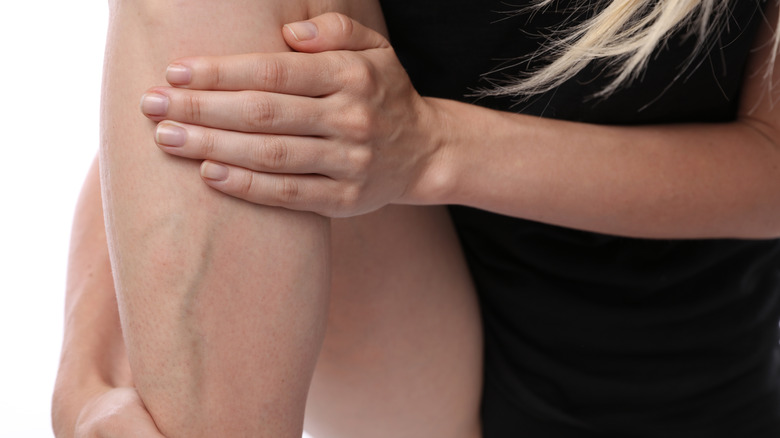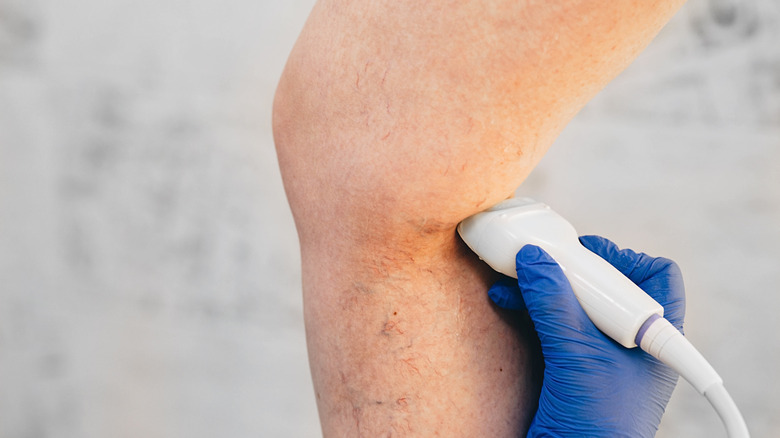How Can You Get Rid Of Varicose Veins?
Our skin masks a whole host of bodily functions that we cannot see happening beneath the surface, and seeing your veins through your skin is a subtle reminder of these functions. It's natural to see faint outlines of your veins when looking at your skin. However, varicose veins may indicate a more serious problem, according to Healthline.
Someone with varicose veins may feel pain when they have them, or they may not feel any pain at all. Varicose veins are fairly common, with approximately 25% of adults experiencing them. When the valve of a vein is damaged and fills with excess blood, it becomes enlarged and swollen, which can cause the vein to twist. Varicose veins typically occur in the legs due to the pressure put on the veins by standing and walking, explains the Mayo Clinic. Veins also have to work against gravity to function correctly, and the veins in the legs are located further away from the heart.
Individuals over the age of 50 may be more likely to experience varicose veins, reports Healthline. Women who are pregnant, or women who have gone through menopause, may also experience them. A lot of the time, varicose veins are simply a cosmetic issue. On rare occasions, though, a vein close to the skin could burst, usually leading to minor bleeding.
In any case, it's wise to have varicose veins checked by a medical professional. If you have varicose veins yourself, you may be wondering if there's anything you can do to get rid of them.
Treatment options for varicose veins
If you or someone you know has varicose veins, there are a few different options for treatment. As explained by Johns Hopkins Medicine, one can opt for laser treatment to get rid of varicose veins. During laser surgery, an enlarged varicose vein is hit by radiation from the laser device, which causes the vein to shrink and scar as the excess blood begins to travel to nearby veins. In a more invasive surgery called vein ligation and stripping, incisions are made near the top and bottom of the varicose vein (per University of Utah Health). The surgeon will insert a device through the damaged vein, which allows them to remove it.
For individuals who are understandably fearful of surgery, other more natural treatments are available. According to Healthline, wearing compression socks and stockings may reduce the severity of varicose veins. The extra pressure that compression socks and stockings apply to the legs may make it easier for blood to travel up to the heart.
Making some changes in your lifestyle may also prevent varicose veins from becoming more severe, and could stop you from developing new ones. When sleeping or resting, you can keep your legs elevated. You can also refrain from standing for long periods of time when you're awake. NYU Langone Health also suggests exercising and maintaining a healthy weight, as extra weight can put pressure on the veins in the legs. In addition, consuming lower levels of salt may prevent new varicose veins.


